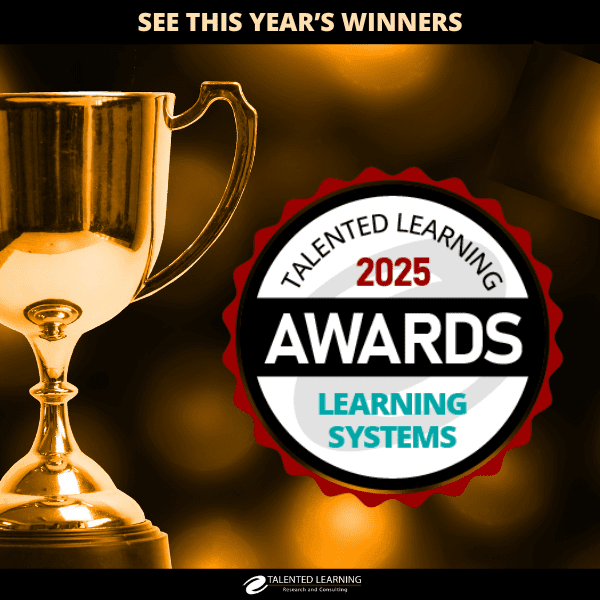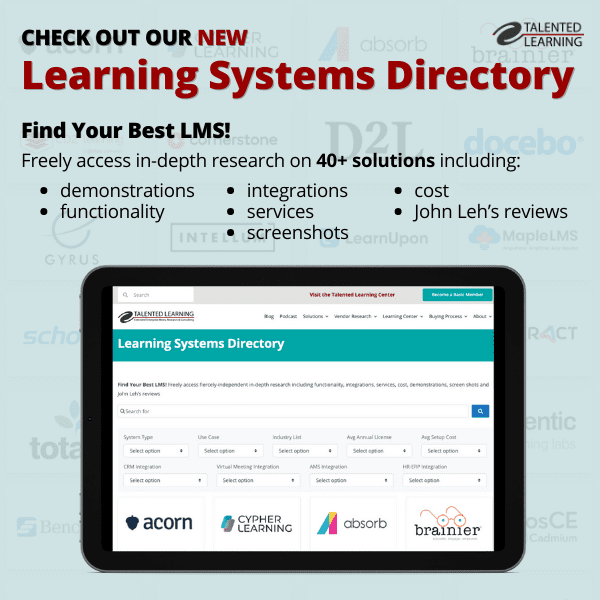
EDITOR’S NOTE: Because extended enterprise learning involves multiple disciplines and perspectives, we sometimes invite experts from learning technology companies to share their insights. Today, Nick Eriksen of Eurekos shares advice on what to consider when measuring the impact of customer and partner training.
If your organization trains customers, business partners and employees, you know employee training is a different animal. That’s because employees are a captive audience. And usually, they’re required to complete training for compliance or professional advancement.
In contrast, customers and partners voluntarily choose to participate in training. It’s difficult to reach these audiences, much less get them engaged and keep them committed to an ongoing learning journey. However, it’s worth the effort. That’s because educated customers and partners can drive measurable business benefits.
What’s Unique About External Training?
These three factors distinguish customer and partner training from employee-focused programs:
- Content focus – Each audience has unique content goals:
– Employees need to develop work-related knowledge and skills.
– Partners want to learn how to promote, sell and support your products.
– Customers want to understand how to use your products and services effectively, so they can gain value from them as soon as possible.
- Content Delivery – Pushing training content and notifications to employees is quick, easy and reliable with internal company email. But communicating with customers and partners is trickier. You’ll need to offer multiple sign-up options. Also, your learning management system (LMS) will need to work hand-in-hand with customer portals, CRM systems, partner login systems and other elements in your business technology stack. This way, you can manage external training as a cross-functional team effort.
- Measuring results – Your LMS data can provide basic information about customer and partner training participation. However, more sophisticated metrics can help you effectively measure program performance and business impact. For instance, many programs monitor product and service revenue, adoption, time-to-proficiency, churn rate and net promoter score (NPS).
How Customer and Partner Training Influence the Top Line
Customer and partner training can be any organization’s secret weapon. It’s a powerful tool to facilitate onboarding, accelerate customer success, improve retention and boost investment in your offerings through cross-selling and upselling opportunities.
For instance, say you’re in the software business. While a customer is learning about product basics, you can expose them to add-on software enhancements, white-glove technical support services, or certification training. These related offers can increase related revenue streams, even as you strengthen the customer relationship.
Measuring Customer and Partner Training: What Counts?
Elements of ROI
When measuring return on investment (ROI) for customer and partner training, focus on these factors:
- Product adoption – A successful training program successfully onboards new customers and partners. This empowers customers to use your product more often, and ensures that partners will recommend it to their customers. It also means both will be more likely to invest in other products and services you offer.
- Renewals – Better-trained customers and partners are more likely to remain loyal to your products.
- Profit – Retaining existing customers and partners is at least five times cheaper than finding new ones. Plus, better-trained constituents mean lower help desk costs and higher profit margins.
Do you want more information and analysis on the top 40 learning systems in the world? Buy our 2023 Corporate Learning Systems Market Update report – now available through the 2nd half of this year at a 50% discount!
What to Measure
This is the million-dollar question. Just because you offer customer and partner training, there’s no guarantee of success. But how will you know if you don’t know what to measure?
First, clarify your business goals. This could include performance targets for product adoption, customer success, retention, satisfaction levels, and other key objectives. These goals should lead you to ask questions that will identify what to measure.
You can get a more granular understanding of your training impact by calculating a transactional Net Promoter Score (tNPS). While NPS considers the entire relationship between you and your customers or partners, tNPS focuses on specific points of contact. For instance, when a customer completes a learning program in your LMS, it’s a great time to ask about their learning experience.
If you charge customers for training, this opens up a whole new set of metrics. For instance, overall sales and average order value can provide useful insights about the connection between customer learning activity and behavior.
In the early stages of a customer training program, customer lifetime value (CLV) is more important than profitability, according to Adam Avramescu in his book, Customer Education. Initially, customer education will likely be a cost center, but the ROI benefit comes from creating a better-informed, more loyal customer base. Whether your program remains a cost center depends on your business strategy, the products and services you offer, as well as standards for your industry.
How to Measure
The easiest and most direct way to measure the impact of customer and partner training is to compare churn rates, renewal levels and expanded relationships among those who’ve completed training, versus those who haven’t. If your program is working, you should see less attrition and more renewals, along with increased cross-selling and upselling revenue from participants.
Of course, NPS and tNPS surveys should also play a vital role in measurement. Did participants find training useful? Was it worth the cost? Would they recommend it to someone else?
However, measurement isn’t only about NPS. Customer reviews and satisfaction surveys are also highly valuable. While a star rating or a simple “like” is always nice, you should also evaluate qualitative data. Extract as much information as possible to ensure your learning team knows what resonates and what to improve.
Many LMSs help collect this data. However, you’ll get the best overall insights by connecting data from your LMS, your CRM and other systems. In fact, broader data integration is crucial, because customer and partner programs typically depend on other business functions with their own specialized systems.
Access to more complete data from multiple systems can give you a clearer picture of how customers and partners are engaging with specific training content, as well as their results, their subsequent behavior and its effect on your revenue. And when content doesn’t achieve the intended outcome, better data can help you pinpoint issues and improve learning experiences.
Do you want more information and analysis on the top 40 learning systems in the world? Buy our 2023 Corporate Learning Systems Market Update report – now available through the 2nd half of this year at a 50% discount!
Choosing Technology
Most companies have many more customers and partners than employees. If that’s the case for your organization, it means you’ll need a different approach to the learning technology you choose. Scalability should be a top priority. In short, you’ll need an LMS designed to:
- Serve extended enterprise training audiences, and
- Measure the impact of that training.
Actually, most learning platforms are designed for employee training. So to gain the most from your customer and partner training programs, you’ll want to choose your learning platform carefully.
Look for a system that makes it easy to support content personalization and localization for large, diverse audiences. It should also be easy to automate content suggestions, so each customer or partner receives highly relevant recommendations at the ideal time throughout their learning journey.
In addition, the system should adapt learning to an individual’s level of experience. What’s more, it should facilitate feedback from participants and correlate data across multiple systems as your training program gains momentum and maturity over time.
You’ll also need to focus on interoperability. Ideally, your LMS should include integrations that let it speak with your CRM and sales platforms, BI tools and other technology you may use to process and analyze business data. In other words, you’ll want access to robust APIs, standard business connectors, a Learning Record Store, and so on. The actual requirements list should map to your particular organization’s ecosystem. After all, your business is unique, and your KPIs are, too.
Measuring Customer and Partner Training: Final Notes
There are ample ways to measure the direct top-line and bottom-line impact of customer and partner training programs. But effective, reliable analysis requires thoughtful planning, and a technical set up intended specifically for extended enterprise learning.
For example, you’ll need a learning platform that communicates with other relevant systems in your technology stack so you can collect necessary data to support your target metrics. In fact, it’s important to contemplate not only the system you’ll use, but also the partner who can collaborate with you to make that system work. By choosing wisely, you’ll avoid getting caught between vendors who provide different pieces of the overall solution.
This concern usually prompts organizations to switch LMS vendors when investing in customer and partner training. However, by collaborating directly with your existing LMS partner to develop and support a remarkable solution, you may have a compelling reason to remain with them.
Share This Post
Related Posts
Education-Led Growth: How Companies Win When Customers Learn
Many companies offer some form of customer education. But what happens when you commit fully to an education-led growth strategy? See what recent research says...
5 Strategies to Scale Customer Training With an LMS
How can you successfully scale customer training — and why does this matter? Check these proven ways to drive engagement and retention with help from an LMS
5 Data Privacy Factors to Consider When Buying an LMS
Cybersecurity has become a major issue for organizations everywhere. How can learning systems buyers ensure that the LMS they choose will protect data privacy?
Customer Education Content Strategies: Customer Ed Nugget 24
Great customer education drives product engagement, adoption and retention. Which content strategies work best? Find proven ideas in this mini-podcast...
LMS Buying Tip: Why a Software Shortlist Is Your Best Ally
With so many learning systems available, how can LMS buyers make the purchasing process faster, easier and more effective? A software shortlist can help. Here's why...
How to Turbocharge Professional Development for Teachers
Why is it vital to improve professional development for teachers? How are innovative, community-driven solutions making a big difference? One expert explains
Software Customer Education: How Tech Companies Build Loyalty
High-growth tech companies are discovering the value of "in-app" customer onboarding and ongoing customer education. What can we learn from successful software customer education? Find out in this post
Customer Advocacy Missteps to Avoid: Customer Ed Nugget 23
Loyal, vocal customers can be powerful brand advocates. But there are pitfalls. Find out which customer advocacy mistakes to avoid on this mini-podcast
Rewind! Timeless Learning Tech Advice, On-Demand for 2025
Want future-minded learning tech advice to elevate your enterprise education programs? Check these 12 on-demand sessions featuring learning tech analyst John Leh as a special guest...



















FOLLOW US ON SOCIAL